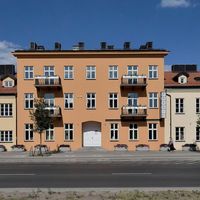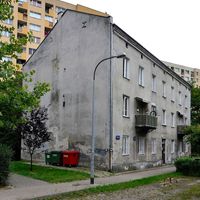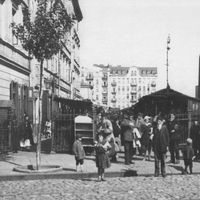Old Praga
6.65

Overview
Stara Praga is a historic area within the Praga-Północ district of Warsaw, bounded by the Vistula River, Solidarności Avenue, Markowska Street, and the railway diametrical line. This area boasts a rich history dating back to at least 1432, when the noble village of Praga was first mentioned. Over the centuries, it has been the site of many significant events, such as the defense against the Swedish army in 1656, the Massacre of Praga in 1794, and post-World War II reconstruction. Stara Praga is characterized by architectural diversity, with its buildings primarily dating from the early 20th century and the interwar period, making it a unique ensemble of pre-war architecture. The central point of the district is Wileński Square, surrounded by important structures such as the Warszawa Wileńska railway station, the Church of St. Mary Magdalene, and the Cathedral of the Warsaw-Praga Diocese. Targowa Street serves as the district’s main axis, featuring the famous Różycki Bazaar, a hub for local gatherings. Despite historical turmoil, post-war Stara Praga struggled with neglect and was often regarded as a disreputable area, though this could not erase its folklore and local traditions. In recent years, Stara Praga has gained popularity, becoming a trendy destination where old tenement houses and abandoned factories are being transformed into art galleries and creative centers. Ząbkowska Street has been recognized as a magical place, highlighting its cultural significance. Among the notable sights are the Warszawa Wileńska railway station, the Cathedral Basilica of St. Michael the Archangel and St. Florian, the Orthodox Church of St. Mary Magdalene, Różycki Bazaar, the Praski Hospital, and the former Warsaw Water Chamber building. This makes Stara Praga not only a place of rich history but also a dynamically evolving cultural and artistic space.
Location
Tickets
Powered by GetYourGuide
You can also find here:

Museum of Warsaw Praga
7
Praga-Północ, Warsaw

Vilnius Station
6.89
Praga-Północ, Warsaw

National Stadium
6.89
Praga-Północ, Warsaw

Władysław IV Vasa High School No. VIII in Warsaw
6.78
Praga-Północ, Warsaw

Olszowa Street in Warsaw
6.68
Praga-Północ, Warsaw

Father Ignacy Kłopotowski Street in Warsaw
6.43
Praga-Północ, Warsaw

Rose Market
6.23
Praga-Północ, Warsaw

St. Michael the Archangel and St. Florian the Martyr Cathedral Basilica in Warsaw
6.01
Praga-Północ, Warsaw
2025 Wizytor | All Rights Reserved